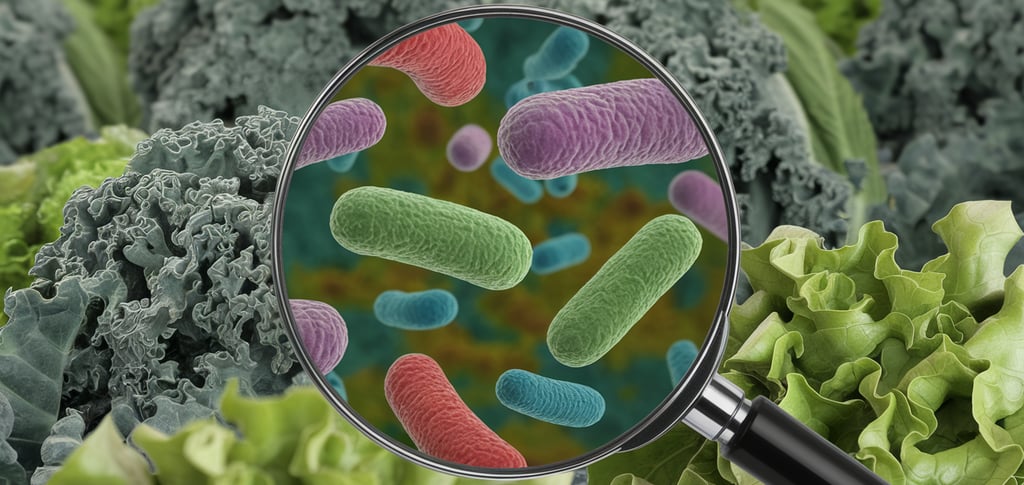Bacterial Cross Contamination: All You Need to Know
Every year, countless individuals around the world are affected by foodborne illnesses. While these illnesses have various causes, one major — and entirely preventable — source is bacterial cross contamination. This article explains everything you need to know about cross contamination, including the types, examples, and most importantly — how to prevent it in your own kitchen.
4/22/20252 min read


What is Cross Contamination?
Cross contamination is the transfer of bacteria or other microorganisms from one substance to another, and it can happen at any stage of food handling — from production to preparation.
Most people assume foodborne illness happens only from restaurants, but it’s just as likely in home kitchens. Cross contamination can occur during:
Farming and harvesting
Food manufacturing
Packaging and transportation
Grocery shopping
Food prep at home or in restaurants
Knowing the types of cross contamination helps reduce risk and improve food safety in your everyday routine.
The 3 Main Types of Cross Contamination
1. Food-to-Food
This happens when bacteria from one food item spread to another. It’s common when raw food touches ready-to-eat foods.
Example: Adding unwashed lettuce to a fresh salad can contaminate the entire bowl with E. coli.
High-risk foods include:
Leafy greens, sprouts, and fresh herbs
Unpasteurized dairy products
Deli meats and soft cheeses
Raw meat, seafood, poultry, and eggs
Tip: Always wash fresh produce thoroughly and store raw meats separately in leak-proof containers.
These food storage containers are ideal for keeping raw ingredients safe and organized.
2. Equipment-to-Food
One of the most common (and overlooked) forms of contamination, this occurs when bacteria on kitchen tools, surfaces, or containers transfer to food.
Example: Cutting raw chicken, then slicing cucumbers on the same board without washing it.
Bacteria like Salmonella and Listeria can live on:
Cutting boards
Knives and spatulas
Food processors
Dish cloths and sponges
Tip: Use separate cutting boards for raw meats and vegetables.
Try this 4-piece color-coded cutting board set for safer food prep — non-slip, durable, and dishwasher safe.
You can also keep surfaces bacteria-free with kitchen-safe disinfecting wipes.
These natural kitchen sanitizing wipes are great for a quick clean between tasks.
3. People-to-Food
Yes — we’re part of the contamination chain, too.
Whether we sneeze, cough, handle raw food, or just touch surfaces with unwashed hands, we can transfer bacteria straight to food.
Common risky behaviors include:
Not washing hands after handling raw meat
Using a dirty apron or towel to wipe hands
Touching phones or doorknobs mid-prep
The easiest solution? Wash your hands for at least 20 seconds with soap and warm water — especially before and after food prep.
Keep your kitchen stocked with a gentle antibacterial hand soap and clean towels to encourage good hygiene habits.
Final Thoughts: Small Habits, Big Difference
Cross contamination is preventable — and that’s the best part. By understanding how bacteria spread and making a few simple changes, you can protect yourself and your loved ones from foodborne illness.
From washing hands to organizing food storage and investing in safer tools, it all starts in your kitchen.
Recommended Kitchen Safety Essentials:
Color-coded Cutting Boards – Reduce the risk of contamination
Natural Sanitizing Wipes – Quick and food-safe surface cleaning
Leak-proof Food Storage Containers – Keep raw and ready-to-eat foods separated
Antibacterial Hand Soap – Encourage clean hands in every meal
Ready to Create a Safer Kitchen?
Stay smart. Stay safe.
Shop Smart Now!
Follow the blog to stay updated—our next post will cover how to avoid cross contamination and keep your food safe.
Join us on Pinterest
letstalk@lorybs.com
© 2025. All rights reserved.
